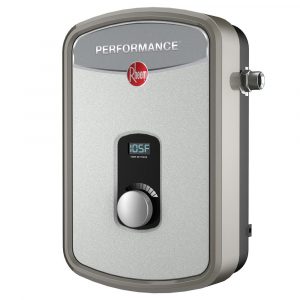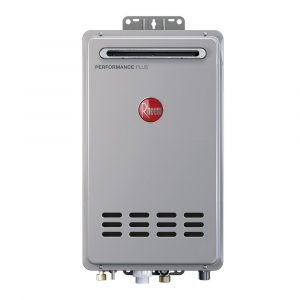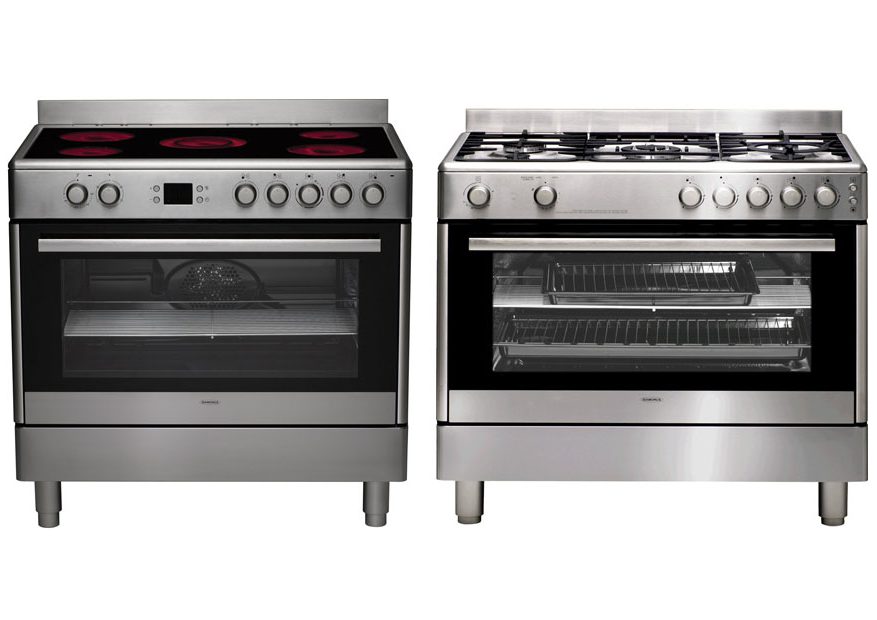Electric VS Gas Tankless Water Heater

Thanks to advancement in technology, modern water heaters can heat water without a storage tank. Such heaters are referred to as tankless, instant-on, flash, inline, on-demand, continuous flow, or instantaneous water heaters. They heat water through an electric element or a gas burner without retaining the water internally. When a tap is turned on, water flows into the unit where it’s heated instantly. This ensures that users get a continuous supply of hot water without having to wait for a tank to fill up.
Tankless water heaters enable homeowners to have hot water when needed. Consumption is also not affected by tank capacity. Once the water flows through the water heater, a heat exchanger moves the heat from the source to the water. This allows hot water to be delivered instantly.
Tankless water heaters help to save on long-term operating costs. Conventional heaters need to keep the water warm throughout the day once it’s heated. This leads to energy wastage. With tankless heaters, all users need to do to determine viability is to compare the savings they make with the cost incurred for purchase and installation.
Tankless water heaters are also environmentally friendly. The concept behind them is simple and efficient. They are normally compact and can be installed in several places around the home. There are two main types of tankless water heaters: electric and gas-powered. Both have different features, unique requirements, risks, and benefits.
Electric tankless water heater description
Features
 Electric tankless water heaters are fitted with a flow sensor that detects the flow of water any time a hot water tap is turned on. The sensor activates a series of elements which heat the water continuously. Once the tap is turned off and the water stops flowing, the sensor deactivates the heating elements. Heat exchanger coils help to transfer heat. They are made from copper as they are easy to fabricate and have high thermal conductivity.
Electric tankless water heaters are fitted with a flow sensor that detects the flow of water any time a hot water tap is turned on. The sensor activates a series of elements which heat the water continuously. Once the tap is turned off and the water stops flowing, the sensor deactivates the heating elements. Heat exchanger coils help to transfer heat. They are made from copper as they are easy to fabricate and have high thermal conductivity.
Electric heaters can be installed throughout the house to meet all the household needs. Like gas tankless water heaters, their greatest advantage is the ability to deliver constant hot water without being limited by a storage tank. There are larger centralized units that can be used in pace of point-of-use units to deliver constant hot water. Under some conditions, they save a lot of energy.
Reports have previously shown that electric water heaters can reduce energy costs by up to 30 to 50 percent. They also minimize chances of forming hard water scale. Unlike traditional tank-based water heaters, electric heaters only run for a few minutes per day. They also don’t need to overheat the water for it to stay warm. Tank-based water heaters turn on and off throughout the day to keep stored water warm. This is not necessary when using an electric water heater.
Strong Side
- Can be used to boost existing setups.
- Great option for point-of-use systems.
- Less expensive compared to tank-style electric water heaters.
- Require little maintenance.
- Great option for low household use.
- Compact and require very little space.
- Includes infrastructure that’s easy to install.
- Environmentally friendly.
- Most units are aesthetically pleasing.
Weak Sides
- Less flow/heating capacity.
- Might need electrical upgrades like circuit breakers and higher voltage and amperage equipment. This can be costly.
- Not ideal for whole-house heating, cold environments, or large households.
- Can lead to high energy costs in the long run. This is because electricity costs more than gas.
Gas tankless water heater description
Features
 Gas tankless water heaters work similarly to standard gas water heaters. The only difference is that they don’t use storage water tanks. Heating only occurs when needed. This saves energy as there is no energy loss due to standby operation. Once a hot water tap is turned on, cold water flows through the heater.
Gas tankless water heaters work similarly to standard gas water heaters. The only difference is that they don’t use storage water tanks. Heating only occurs when needed. This saves energy as there is no energy loss due to standby operation. Once a hot water tap is turned on, cold water flows through the heater.
A flow sensor detects this and turns on the gas burner which then warms the heat exchanger. The water passes through the heat exchanger and leaves heated. A sealed vent system helps to safely direct combustion gases away from the setup. Like electric tankless water heaters, gas heaters are very efficient as they do not need to keep stored water warm.
Gas tankless water heaters are known to last longer than their tank-based counterparts. They use natural gas and other fossil fuels to generate the energy needed to heat cold water. They deliver water continuously at a consistent temperature. A proper ventilation system must be put in place to ensure there’s safe fuel combustion and to achieve maximum efficiency.
Gas tankless heaters are a great alternative for large households and where users require a system for the entire house. This is because gas gives higher flow capacity and more heating compared to electric water heaters.
Strong Sides
- Have higher heating and flow capacity.
- Can be used in rural areas where there is no electricity.
- Works best in cold climates.
- It’s more reliable where there’s a gas system.
- Gas costs less than electricity, hence, lower operation costs.
- Hygienically safe as there are no tanks that can leak.
- Environmentally friendly.
Weak Sides
- Where propane is used, operational costs might be higher than using gas.
- Venting is expensive and needs to be done correctly.
- In higher altitudes, gas tankless water heating requires additional installation to counteract low oxygen levels. Without this, gas won’t burn completely and may produce carbon monoxide.
- If your area has no gas service, you might be forced to install a gas tank.
- Annual maintenance is recommended.
- There are safety risks as gas is susceptible to explosions.
Overview and Conclusion
Due to reliable electricity supply, electric tankless water heaters have an upper hand over gas water heaters. As far as costs go, electricity has a low appreciation rate compared to gas. Units also cost way less to purchase, install, and maintain. Gas setups are expensive due to regular maintenance and initial installation costs.
